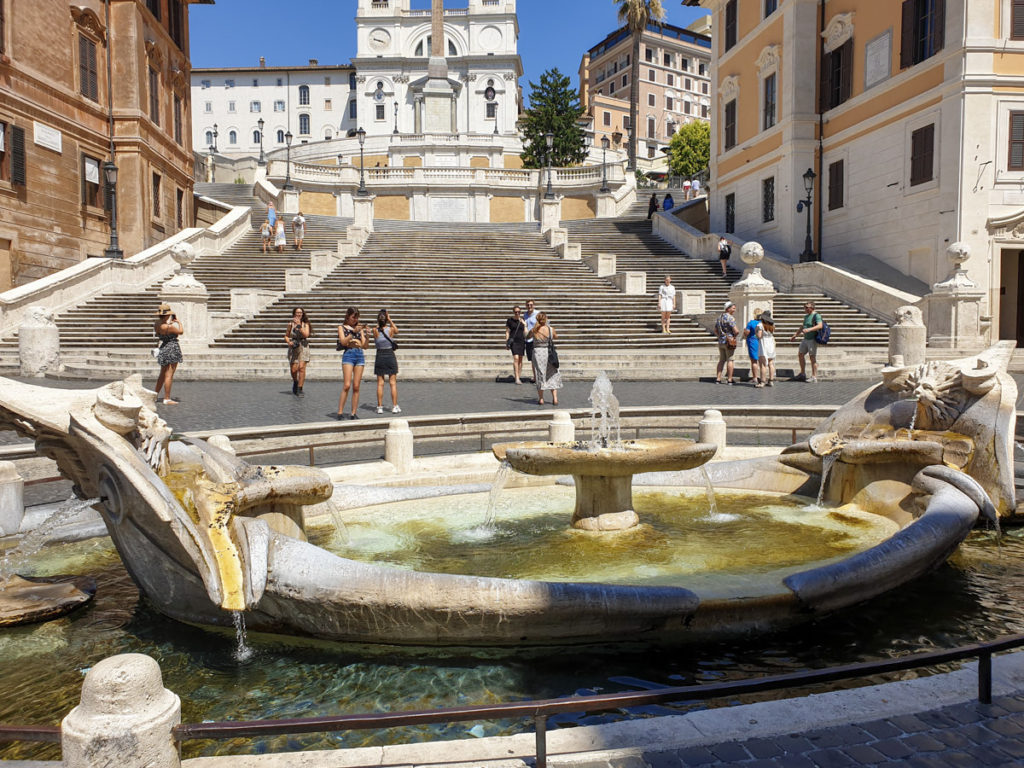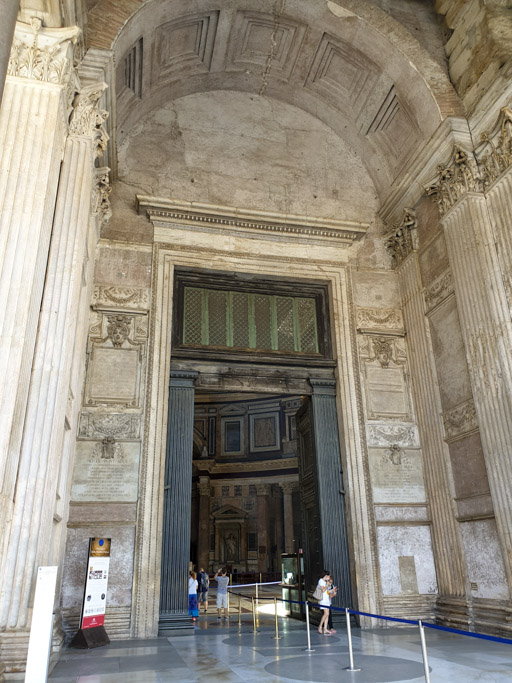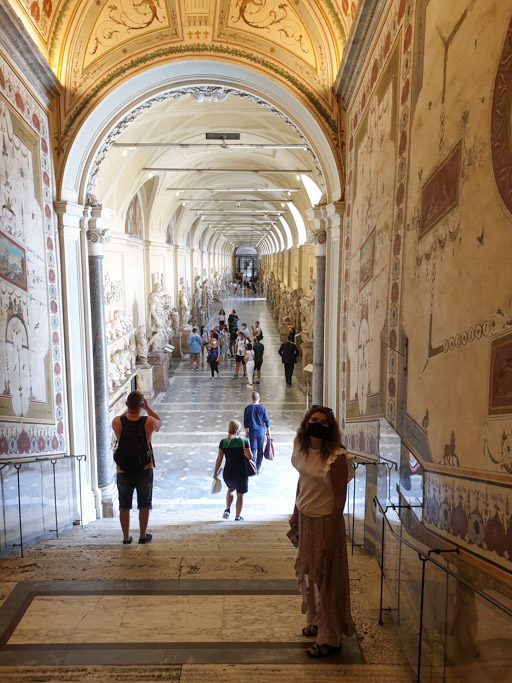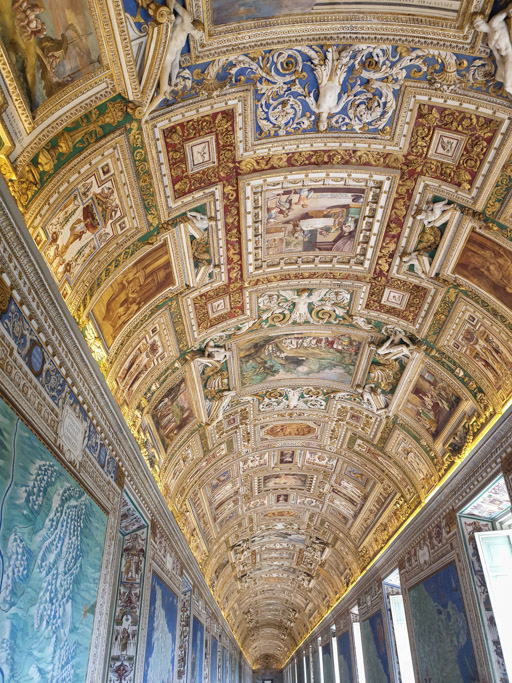A personal experience of a city trip to Rome in a COVID-19 summer. Is it safe to travel to Rome and how about the coronavirus measures?
In August 2020, my brother and sister-in-law went on a city trip to Rome. I’ll be sharing their experience with flying, sightseeing, and the COVID-19 measures in Rome, so that you know what to expect.
City trip outline
On 1 August 2020, they flew with Ryanair from Brussels Charleroi airport to Rome Ciampino. From there they took the train to Rome Termini train station and the bus to their hotel near the Pantheon. On the third of August, they did the same in reverse.
Before departure: the mental battle
The uncertainty about the future situation can cause a lot of anxiety. Should they still do the city trip or cancel? While Italy was hit hard by the coronavirus in spring 2020, it appears to be a very safe destination in the summer of 2020. That doesn’t prevent thoughts like: will we be able to return if there is an outbreak in Rome and the planes stop flying? While a weekend without the kids sounds like fun, longer than that is not exactly what they wanted. Technically, because both Rome and the Netherlands are on the European mainland, there’s always the option to rent a car and drive home.
But still… this would make anyone nervous. Do you recognize this feeling?
In the end, they decided to go for a much-needed break instead of staying in the relative safety of their homes. Then again, because they both have ‘essential’ jobs, they come into contact with many people daily anyway, so what’s the difference when you take the proper precautions?

Planning the city trip
Spontaneous traveling seems to be a thing of the past. You can no longer just hop on a plane and see what happens when you arrive. You have to:
- Look up the COVID-19 measures and entry requirements for the country you’re traveling to. From August 1-3 there were no restrictions for Dutch people traveling to Italy.
- Bring face masks, gloves, and antibacterial gel. You have to wear a face mask on the plane, in public transport, at the tourist sites, and in many shops.
- Fill-out extra forms. Both the airline and the hotel want you to sign forms that you have been without corona-like-symptoms for the past fourteen days. If you haven’t filled out the forms, you might not be allowed to board the plane. Ryanair sent them kinda late: only a day and a half before departure. In practice, my brother and sister-in-law didn’t actually have to show their forms.
- Reserve time slots for museums and other major tourist sites. For Rome this was necessary for the Vatican Museums, the Colosseum and Villa Borghese.
At the airport and on the plane
A computer will measure your temperature. If it is too high you’ll get a second chance with a head thermometer. No need to worry unless you really have a high fever.
Then something that surprised them: while you have to wear face masks at the airport and on the plane, this does not seem to be the case when you order food or drinks. If you spend the whole flight drinking and eating, you won’t have to put your face mask on. The same goes when you eat or drink something at a cafe or restaurant at the airport. Now, what’s safe about that?
The situation in Rome
The good
- Rome wasn’t crowded at all and fewer people were allowed inside the tourist attractions. Who doesn’t love exploring non-crowded places?
- Having a time-slot for your visit to a museum or tourist site. Because the queues are shorter there is no need to buy more expensive skip-the-line tickets. You can just use regular prices and buy the tickets directly from the venue’s website. Make sure you order on time: for example, one week in advance Villa Borghese was fully booked.
The bad
- Hotels might nog store your luggage before or after your stay because of the COVID-19 regulations.
- Temperature checks at every tourist attraction can cause anxiety.
- Wearing face masks with 30+ degrees.
- You have to plan ahead as you often have to reserve time-slots for tourist attractions.


Was it fun?
The most important question is of course: did they enjoy their city trip to Rome?
Yes, they enjoyed it a lot. They loved Rome and didn’t feel hindered by the COVID-19 measures at all. While they can’t compare their experience to a pre-coronavirus experience, from their pictures I can see that it was really quiet in Rome (much quieter than during my visit in 2004). I almost bought a plane ticket to Rome myself so I could see Rome with fewer people. Imagine having your own personal space in the Pantheon!
The only thing they liked less is wearing face masks when it is 35+ degrees, but then again, that’s obligatory in many countries right now.
Some questions answered
These are the things they wanted to know more about before departure. The answers come from their experience and questions they asked the airline, airport, hotel, and officials.
As they worried a lot about their body temperatures, there are some questions about that. For those of you who worry: while the measurements at home were 37 – 37.5 degrees, in Rome and at the airport they were always around 36.2. So unless you have a high fever, there is no need to worry about the temperature measurements on your trip.
What happens if the country turns orange before departure or during your stay?
This depends a lot on the country you’re from and the insurance company or travel agency you use.
Before departure
- Travel insurance might not cover your trip
- You might not get any help returning home
- Going is risky: your health might be in danger
During your city trip
- You might not be able to fly home
- You might have to go into lockdown if the situation turns really bad
- You might have to observe a 14-days quarantine period when you get back home
What happens if your temperature is too high at the airport?
If the computers at the airport detect a body temperature that is too high, you will be called to an office to see a doctor. The doctor will measure your temperature again and decide what happens. Often, by sitting down for a few minutes (stressing less) your temperature will drop on its own. If you have a fever, your temperature wouldn’t drop. If your temperature is still too high, you won’t be able to board the plane and you’ll have to do a coronavirus test.


What happens if your temperature is too high in Rome?
If your temperature is too high when measured at the entrance of a hotel, shop, or tourist attraction, the authorities will be alerted. This is stipulated in the rules; the establishment can’t decide otherwise. In Rome, you get the result of your coronavirus test within 24 hours, so if you don’t have the coronavirus, the worst-case scenario is that you have to stay in your hotel room for 24 hours. After that, you can explore Rome.
If you do have the coronavirus, then you’ll have to go into quarantine for two weeks in Rome.
What if you have a standard high body temperature?
You can consider bringing a medical declaration from a general practitioner. While the hotel in Rome wouldn’t accept such a declaration – they have to call the authorities when your temperature is over 37.5 degrees Celsius – the airport doctor is said to take note of the declaration. What happens after still depends on the actual doctor in front of you, but it can help.
What can you try at home to feel less anxious?
- Know your body: what is your usual body temperature?
- Compare a (rectal) thermometer result with a head thermometer result. On your trip, they will measure your temperature using a head thermometer. The result is often 0.6 degrees Celsius higher than that of a rectal thermometer. So if the head thermometer says you have 37.5 degrees, then you actually have 38, so a real fever. After you know the difference between the thermometers, you can take your thermometer on your trip and measure your own body temperature before taking the official check. If you’re in the clear, then you can go ahead.
- Know the rules of the country you’re traveling to. When will they measure your temperature?
- Don’t plan too many activities and have a back-up plan. Rome can still be fun if you don’t go inside the buildings.
How to bring your body temperature down?
- Drink plenty of water. Ice creams containing sugar don’t work as well.
- Sit in the shadow for five minutes before having your temperature measured.
- Relax in a ventilated area.
This mostly applies to visiting Rome in summer (30+ degrees).
To conclude
I hope this personal account is of some help to those of you considering a city trip. All in all, if you follow the rules of the country you’re visiting, this seems like a great year to explore cities that are usually extremely crowded. Italy has very clear rules, as opposed to some other countries, so you know what you can expect when you travel there.







